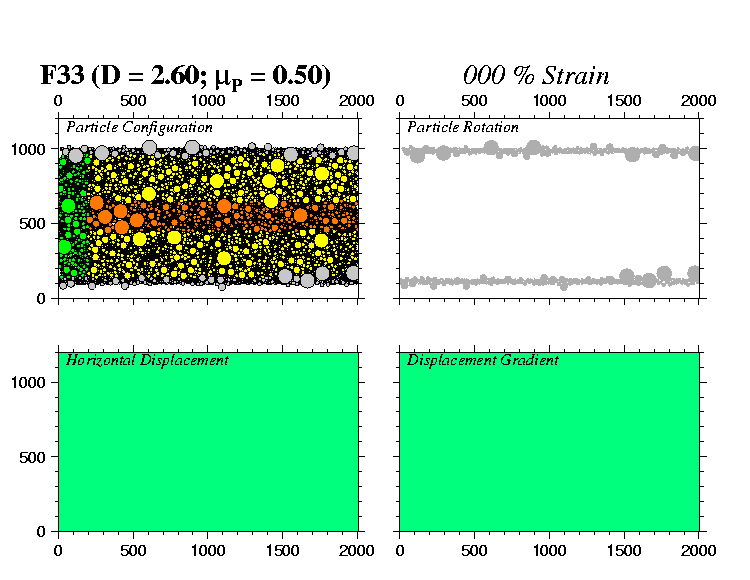

This experiment was run on an assemblage of particles with fine grain size (D = 2.60), and relatively high interparticle friction (0.50). The four panels show changes that take place over 2% shear strain increments:
(1) Particle Configuration
This shows progression of deformation within granular shear zone. Colored particles are strain markers, originally vertical and horizontal. Gray particles define rough walls - particles are fixed relative to eachother and move as a unit. The upper wall translates to the right at a constant velocity, and both walls move vertically to maintain constant normal stress.
Particle colors scale with direction and magnitude of particle rotation. Yellow-orange-red particles represent increasing rotations in a direction consistent with sense of shear (top to the right); Green-light blue-dark blue rotate in the opposite direction. White indicates no rotation.
Vectors indicate averaged, gridded residual particle displacements, that is, the difference between displacent due to homogeneous shear across the shear zone and actual particle displacements. Colors represent horizontal component of residual displacements: red indicates zones that experience greater displacement than homogeneous (e.g., coupled to upper plate); blue indicates less displacement (coupled to lower plate).
(Note, if the images change resolution as the movie plays, in Netscape you can turn that off: Go to "General Preferences" under "Options", select "Images", and choose "Display images after loading".)Spatial gradient of horizontal displacement field, highlighting discontinuities or faults within the shear zone: zones of synthetic shear grade through yellow-orange-red through increasing rates of shear; antithetic shear surfaces grade through green-blue-violet.